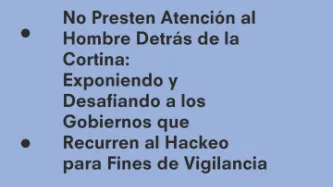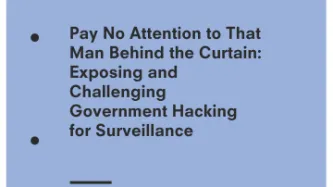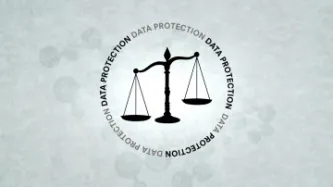Advanced Search
Content Type: Examples
In a 2018 interview, the Stanford professor of organisational behaviour Michal Kosinski discussed his research, which included a controversial and widely debunked 2017 study claiming that his algorithms could distinguish gay and straight faces; a 2013 study of 58,000 people that explored the relationship between Facebook Likes and psychological and demographic characteristics; and the myPersonality project, which collected data on 6 million people via a personality quiz that went viral on…
Content Type: Examples
In 2018, a Duke University medical doctor who worked with Microsoft researchers to analyse millions of Bing user searches found links between some computer users' physical behaviours - tremors while using a mouse, repeated queries, and average scrolling speed - and Parkinson's disease. The hope was to be able to diagnose conditions like Parkinson's and Alzheimer's earlier and more accurately. Other such studies tracked participants via a weekly online health survey, mouse usage, and, via…
Content Type: Examples
In 2011, the US Department of Homeland Security funded research into a virtual border agent kiosk called AVATAR, for Automated Virtual Agent for Truth Assessments in Real-Time, and tested it at the US-Mexico border on low-risk travellers who volunteered to participate. In the following years, the system was also tested by Canada's Border Services Agency in 2016 and the EU border agency Frontex in 2014. The research team behind the system, which included the University of Arizona, claimed the…
Content Type: Examples
In 2018, the EU announced iBorderCtrl, a six-month pilot led by the Hungarian National Police to install an automated lie detection test at four border crossing points in Hungary, Latvia, and Greece. The system uses an animated AI border agent that records travellers' faces while asking questions such as "What's in your suitcase?". The AI then analyses the video, scoring each response for 38 microexpressions. Travellers who pass will be issued QR codes to let them through; those who don't will…
Content Type: Examples
In July 2014, a study conducted by Adam D. I. Kramer (Facebook), Jamie E. Guillory, and Jeffrey T. Hancock (both Cornell University) and published by the Proceedings of the National Academy of Sciences alerted Facebook users to the fact that for one week in 2012 689,003 of them had been the subjects of research into "emotional contagion". In the study, the researchers changed randomly selected users' newsfeeds to be more positive or negative to study whether those users then displayed a more…
Content Type: Advocacy
Tanto la privacidad como la seguridad son esenciales para proteger a los individuos, su autonomía y su dignidad. El detrimento de la privacidad implica el detrimento de la seguridad de los individuos, sus dispositivos y la infraestructura de la que forman parte. La gente necesita privacidad para sentirse libremente segura y proteger su información, así como para gozar plenamente de otros derechos.
Una cantidad cada vez mayor de Gobiernos en el mundo está recurriendo también al hackeo para…
Content Type: Advocacy
Privacy and security are both essential to protecting individuals, including their autonomy and dignity. Undermining privacy undermines the security of individuals, their devices and the broader infrastructure. People need privacy to freely secure themselves, their information, and fully enjoy other rights.
A growing number of governments around the world are embracing hacking to facilitate their surveillance activities. When governments hack for surveillance purposes, they seek to…
Content Type: Advocacy
Introduction
Why We Are So Concerned about Government Hacking for Surveillance
Scope of Our Safeguards
1. Legality
2. Security and Integrity of Systems
3. Necessity and Proportionality
4. Judicial Authorisation
5. Integrity of information
6. Notification
7. Destruction and Return of Data
8. Oversight and Transparency
9. Extraterritoriality
10. Effective Remedy
Commentary on each
1. Legality
2. Security and Integrity of Systems
3. Necessity and Proportionality
4.…
Content Type: Examples
Designed for use by border guards, Unisys' LineSight software uses advanced data analytics and machine learning to help border guards decide whether to inspect travellers more closely before admitting them into their country. Unisys says the software assesses each traveller's risk beginning with the initial intent to travel and refines its assessment as more information becomes available at each stage of the journey - visa application, reservation, ticket purchase, seat selection, check-in, and…
Content Type: Examples
In 2016, Facebook and its photo-sharing subsidiary Instagram rolled out a new reporting tool that lets users anonymously flag posts that suggest friends are threatening self-harm or suicide. The act of flagging the post triggers a message from Instagram to the user in question offering support including access to a help line and suggestions such as calling a friend. These messages are also triggered if someone searches the service for certain terms such as "thinspo", which is associated with…
Content Type: Examples
Recruiters are beginning to incorporate emotional recognition technology into the processes they use for assessing video-based job applications. Human, a London-based start-up, claims its algorithms can match the subliminal facial expressions of prospective candidates to personality traits. It then scores the results against characteristics the recruiter specifies. HireVue, which sells its service to Unilever, uses the emotion database of Affectiva, a specialist in emotion recognition that…
Content Type: Examples
In February 2018 the Canadian government announced a three-month pilot partnership with the artificial intelligence company Advanced Symbolics to monitor social media posts with a view to predicting rises in regional suicide risk. Advanced Symbolics will look for trends by analysing posts from 160,000 social media accounts; the results are intended to aid the Canadian government in allocating mental health resources. The company claims to be able to predict suicidal ideation, behaviours, and…
Content Type: Examples
In 2014, the UK suicide prevention group The Samaritans launched Radar, a Twitter-based service intended to leverage the social graph to identify people showing signs of suicidal intent on social media and alert their friends to reach out to offer them help. The app was quickly taken offline after widespread criticism and an online petition asking them to delete the app. Among the complaints: the high error rate, intrusiveness, and the Samaritans' response, which was to suggest that people…
Content Type: Examples
A pregnancy-tracking app collected basic information such as name, address, age, and date of last period from its users. A woman who miscarried found that although she had entered the miscarriage into the app to terminate its tracking, the information was not passed along to the marketers to which the app's developer had sold it. A few weeks before her original due date, a package was delivered to her home including a note of congratulations and a box of baby formula. Although the baby had died…
Content Type: Examples
A new generation of technology has given local law enforcement officers in some parts of the US unprecedented power to peer into the lives of citizens. In Fresno, California, the police department's $600,000 Real Time Crime Center is providing a model for other such centres that have opened in New York, Houston, and Seattle over the decade between 2006 and 2016. The group of technologies used in these centres includes ShotSpotter, which uses microphones around the city to triangulate the…
Content Type: Examples
Because banks often decline to give loans to those whose "thin" credit histories make it hard to assess the associated risk, in 2015 some financial technology startups began looking at the possibility of instead performing such assessments by using metadata collected by mobile phones or logged from internet activity. The algorithm under development by Brown University economist Daniel Björkegren for the credit-scoring company Enterpreneurial Finance Lab was built by examining the phone records…
Content Type: Examples
A new generation of technology has given local law enforcement officers in some parts of the US unprecedented power to peer into the lives of citizens. The police department of Frenso California uses a cutting-edge Real Time Crime Center that relies on software like Beware.
As officers respond to calls, Beware automatically runs the address. The program also scoures billions of data points, including arrest reports, property records, commercial databases, deep Web searches and the man’s social…
Content Type: Examples
At the Sixth Annual Conference on Social Media Within the Defence and Military Sector, held in London in 2016, senior military and intelligence officials made it clear that governments increasingly view social media as a tool for the Armed Forces and a "new front in warfare". Social media are also viewed as a source of intelligence on civilian populations and enemies and as a vector for propaganda. The conference was sponsored by Thales, which was working with the National Research Council of…
Content Type: Examples
In 2016, researchers at MIT's Computer Science and Artificial Intelligence Laboratory developed a new device that uses wireless signals that measure heartbeats by bouncing off a person's body. The researchers claim that this system is 87% accurate in recognising joy, pleasure, sadness, or anger based on the heart rate after first measuring how the individual's body reacts in various emotional states. Unlike a medical electrocardiogram, it does not require a sensor to be attached to the person's…
Content Type: Examples
According to the US security firm Statfor the Chinese government has been builsing a system to analyse the massive amounts of data it has been collecting over the past years. The company claims: "The new grid management system aims to help the Chinese government act early to contain social unrest. Under the new program, grid administrators each monitor a number of households (sometimes as many as 200). They then aggregate their reports into one enormous surveillance database, where it is…
Content Type: Impact Case Study
What happenedIn the aftermath of 9/11, Governments across the world rushed to legislate to expand surveillance. GovernmentsMoved to limit debate and reduce consultations as they legislated with speed.Created new systems to collect data on all travellers, for the purpose of profiling and risk scoring.Expanded identity schemes, and began demanding biometrics, particularly at borders.Developed financial surveillance mechanisms on an unprecedented scale.What we didFew non-governmental…
Content Type: Impact Case Study
What happenedStrong and effective data protection law is a necessary safeguard against industry and governments' quest to exploit our data. A once-in-a-generation moment arose to reform the global standard on data protection law when the European Union decided to create a new legal regime. PI had to fight to ensure it wasn't a moment where governments and industry would collude to reduce protections.In January 2012, the European Commission published a proposal to comprehensively reform the…
Content Type: Advocacy
On 20 March 2015, Privacy International and Open Rights Group submitted comments on the UK Government's draft Equipment Interference Code of Practice.
The UK has been hacking for over a decade, yet the release of the draft Code of Practice is the first time the UK intelligence services have sought public authorisation for their activities. Indeed, it is the first time the intelligence services have publicly acknowledged they engage in hacking.
Unfortunately, the draft Code of…























